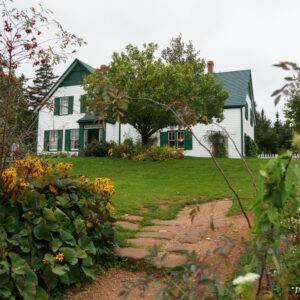Bighorn Battle
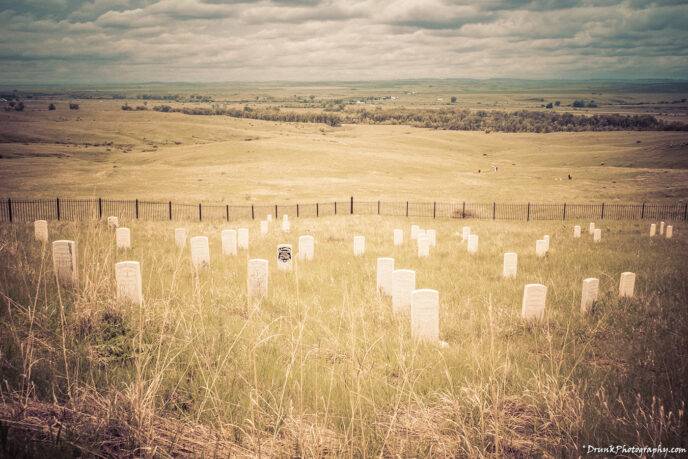
Here is where Custer lays
Custer’s Last Stand at Little Bighorn: Bucket-list visit to Montana
Crow Agency, MT 59022

I was on my way to the site of the Battle of Little Bighorn, which was the place that George Armstrong Custer fell. I had realized that I really didn’t know or remember many details about Custer, other than he was very well loved by US Citizens for his handling of Native Americans, even to this day. I wrote a paper on him, in my youth, and I ACED it, yet all I did was praise him for being a great killer. What popped into my head next was a video game I played, long, long ago. I did hear of Battle of Little Bighorn but had no idea of its significance. However, my first introduction to the legend of George Armstrong Custer was through a wildly popular video game named “CUSTER’S REVENGE” on the Atari 2600, at a friend’s house, and I guess how he tried to kill Dustin Hoffman in Little Big Man, each depiction might be very accurate. You know what you did in that video game, as Custer? You/He RAPED NATIVE AMERICAN WOMEN! True story. That was my official introduction to American History of Native Americans, via a video game. In the game, Custer has a cowboy hat, boots, bandanna around his neck… oh and he was NAKED with a huge HARD ON, which he attacked with . You played as Custer, and you ran around to avoid the raining down arrows from above (obviously a reference to the Battle of Little Bighorn), and rape the Native American women tied to a pole. TRIGGER WARNING!!!: Kotaku has a great feature on it HERE. Custer was larger than life figure, but no one made a game of someone like George Washington raping anyone. I had no idea what this “revenge” part of the name of the game was about, but I did wonder, “did the makers of this game know the Custer was a KNOWN RAPIST OF NATIVE AMERICAN WOMEN who often joked about it regularly?” It was part of his strategy, to break the spirits of the enemy, rape was. I realized that the paper I wrote, should have been failed because the true character of Custer was NOT in my earlier history books.
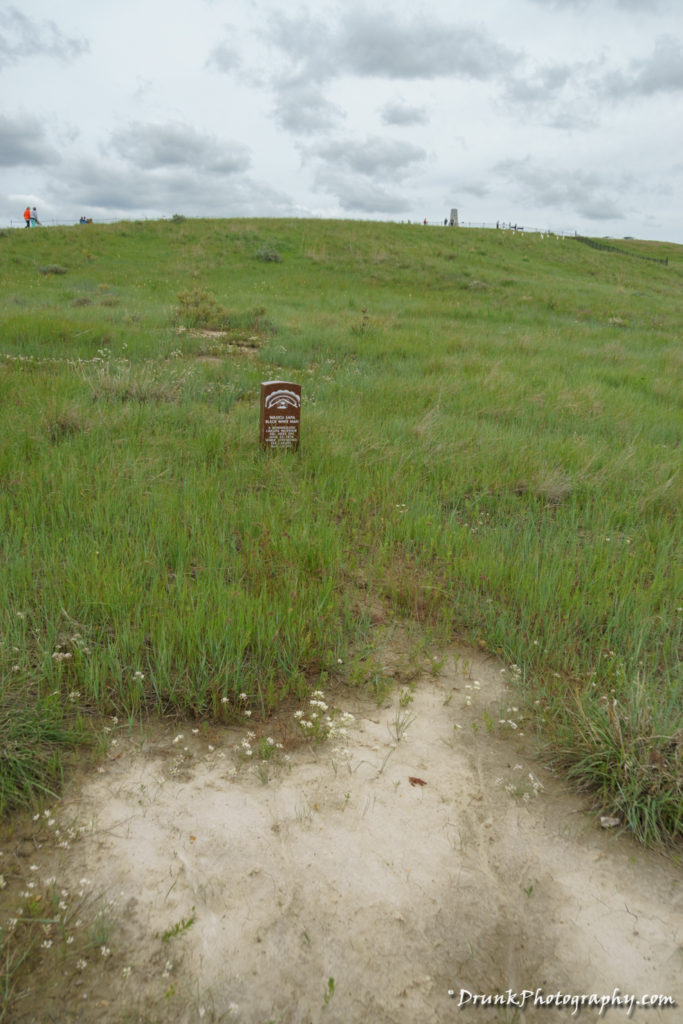
Some Native Americans were alleged to have raped some White Settler women (I don’t buy it as there are no records just hearsay), after raids, in addition to stealing livestock and slaughtering men. This was carried out by the Cheyenne, in 1868 modern Missouri. That was a huge mistake, as that was right in the backyard of where US top Major General Phillip Sheridan was based at. That forced him to instate volunteer cavalries to fight the Natives, on the dime of the US Government. After these initial cavalries didn’t return or didn’t even win any significant fight against the Native Americans, Sheridan called in the big guns. He ordered the savior, George Armstrong Custer and his 7th Cavalry to get involved in fighting the Natives, Custer won and won BIG, in the Battle of Washita River. Now he was cemented as THE go-to guy for US Military raids, and everything we know of his reputation today, and his new target were the Cheyenne! That stirred the racial components to the conflicts, and Custer, the great Indian killer, was born. But here is where the true nature of Custer came in to play. To sneak into the camp of this battle, he killed his own personal hunting dogs because they made too much noise. Killed all horses, no problem. His cruelty showed when he took the battle to the Washita River, he would capture women and children, and line them up as human shields against the Cheyenne counter-attacks.
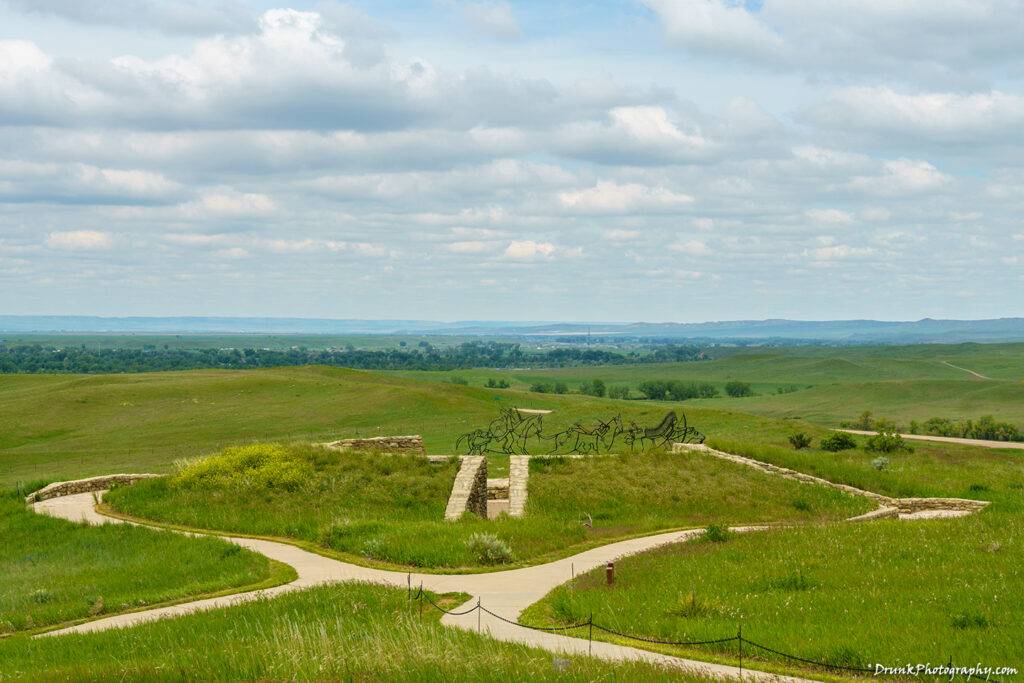
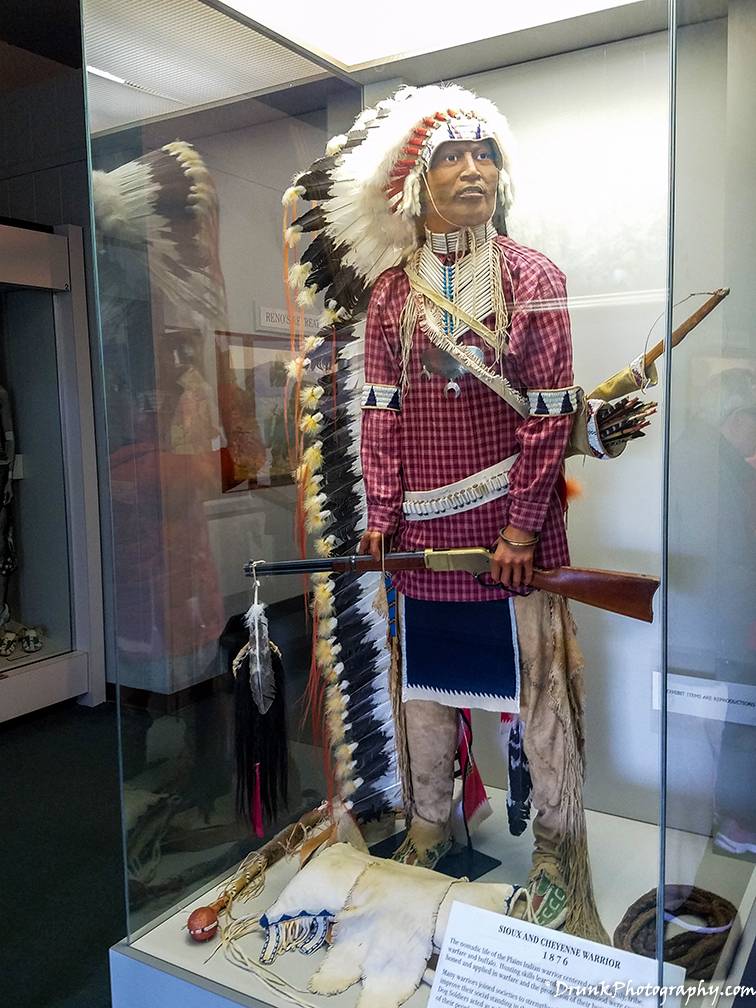
That was Custer’s plan all along, hostage taking to force Cheyenne to surrender, which would completely negate the effects of his crew being completely outnumbered by the Cheyenne, and few other tribes making camp with them. That was a crazy strategy and it worked, he took over 50 hostages. The hostages, women, and children, were taken back to Custer’s camp, AND RAPED, repeatedly, night after night by Custer and his men! However, this was called a battle, yet many claimed it was a horrific MASSACRE by Custer after he already had the advantage, yet still did all of this. He kept one Native Chief’s daughter, named Monahsetah, and raped her all that Winter, for all to watch. While the Government failed to initially tally the deaths after that battle and didn’t report the bodies, Custer made sure his number was up, he had it at 103 Natives killed. He was determined to get his kill stats up. All of THAT is pure Custer, unconventional methods of war which could endanger everyone with his risk-taking/ gambling, and a huge ego that needs to showboat for attention. You need to know that character profile to process the importance Battle of Little Bighorn, and Custer’s activities at Little Bighorn. Custer was full of himself and a psycho. And Monahsetah would go on to possibly have Custers’ babies, which they don’t know if they were his because his brother and crew also raped her. Custer was a dirty guy, he sexed anything moving, so he was laced with STDs since the Civil War, infecting his wife and all. People said he was sterile due to the STDs so those couldn’t be his kids. Monahsetah willingly stayed with Custer and crew, in classic Stockholm syndrome. THAT is the spirit of Custer. Your boy Custer was a wild man, but his tactics were not unique to him, as they were also techniques of terrorism used throughout the world to attack demoralize and destabilize communities by attacking/enticing/raping the women of that community. Russians were doing this to Alaskans, when they took over Alaskans and wanted to shame and assert dominance. Americans, who are from Europe, did it to the African slaves, in the USA, so nobody should be shocked that Custer continued to use this technique.

When I finally arrived at the site of the Battle of Little Bighorn, which is in Montana, on the Crow’s Agency or Reservation, I finally got to take in the scene that Custer is most known for, his “last stand” which took place here at Little Bighorn. I learned a whole lot of new data I had no idea about, previously, an embarrassing amount, to be honest. While other visitors to the Battle of Little Bighorn memorial were completely clueless (understandably so) about the scenery (few Canadians and the European descendants with me), my ignorance on this subject, or gaps in my knowledge, were even more shocking. If you go to this place, you should probably brush up on your history, or it will seem like a waste of time for you, as you will have no historical context for the visit- unless you are there to get bitten by cute Prairie Dogs with rabies, in the nearby areas. I began to write this while stuck in the airport at Rapid City, South Dakota, and am just now getting back to it. While I had a lot of things to learn about the Battle of Little Bighorn, and only ended up left with more questions. I was Googling like crazy after I finally gained Internet coverage.
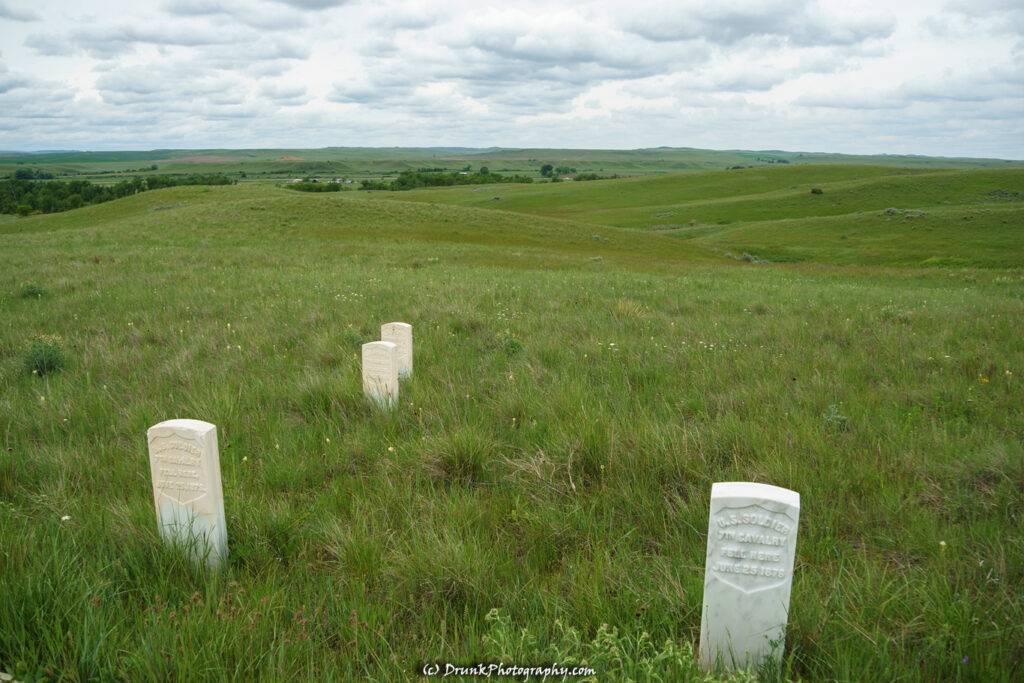
That info made the trip even more sweet to me, as I made my way between Montana and South Dakota, picking up information about the past of Native American struggles. I only knew what I mentioned earlier of Lieutenant Colonel George Armstrong Custer, and I knew even less of key Native American heroes like Crazy Horse, Red Cloud, and the likes, which infuriated me, at this point, given that they were HUGE figures in American History. I knew of Sitting Bull, but who was this Crazy Horse character? I didn’t know that Custer went to the Black Hills, not once but TWICE, for different reasons, the first I didn’t know. I also vaguely knew of the Battle of Little Bighorn, other than Custer died here. My textbooks, as a youth in US, depicted the Native Americans as the ones to vilify. I was led to believe that there were some treaties that were violated by the Native Americans, not by the US, because Native Americans wouldn’t stay on the reservations carved out for them by the Government, and had to be dealt with. How I learned it was how the HISTORY CHANNEL described it here “Tensions between the two groups had been rising since the discovery of gold on Native American lands. When a number of tribes missed a federal deadline to move to reservations, the U.S. Army, including Custer and his 7th Calvary, was dispatched to confront them“. That’s how I learned it, a gross over-simplification of the matters, almost to the point of being a complete omission of fact, as I’ll explore in this piece. Man, did I have all the info all wrong, and I sought to gain some insight while taking 2 trips: 1 to Montana and 1 to South Dakota, USA.
Treaties are meant to be broken
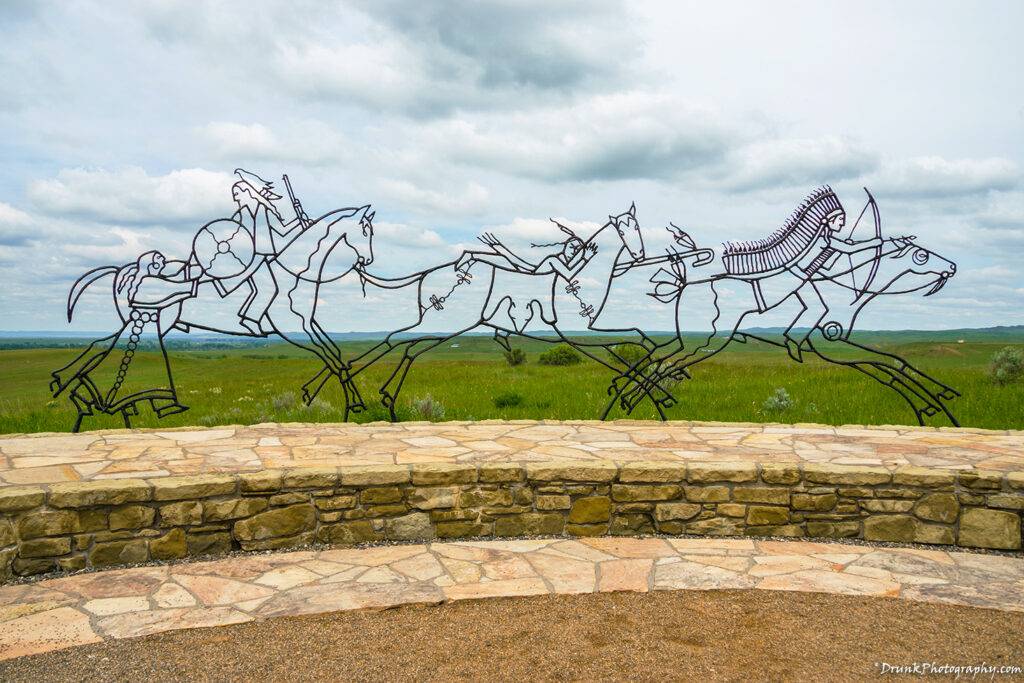
Most Americans have no idea about the Battle of Little Bighorn, but what transpired at Battle of Little Bighorn surely sealed the fate of Native Americans, in the USA, which makes it incredibly important. One of the most important battles, aside from the Battle of Little Bighorn, was one for the area occupied by the Lakota Native Americans, the battle for the Black Hills. Fort Laramie was a US fort that a few conflicts with Natives were settled at, and treaties were signed there. The 1851 treaty was posed as a method to separate the various, often warring with each other Native tribes, from encroaching on the land of another tribe, by carving out land (reservations or agencies) clearly stating where they would each be restricted to. More importantly, it was the highlight where they could not be geographical, pre-Civil War. The real goal of the treaties was to ensure safe passage for White Settlers along what is known as the “Oregon Trail“, initially, through areas heavily occupied by Native Americans. There would be roads and more importantly FORTS built in each territory to ensure peace and passage after the failure of the 1851s agreement. Violations of the treaty of 1851 happened regularly, by Native Americans, and they regularly had a war between themselves, overtaking land where the conflict would happen. Being caged in by the US didn’t seem like a thing many wanted to respect, and understandably so. The treaty of 1851 had declarations about how ONLY a Native tribe called “Crow” were the rightful owners of an area in today’s Wyoming, known as “Powder River Country“. A group of Natives called the “Lakota” were huge figures in the Northwest US, very powerful. The Crow and Lakota were known enemies, and eventually, the Lakota took over that previously promised Crow land, chasing out Crows entirely, which was a clear violation of the 1851 treaty. That violation would continue from 1866 to 1868, and reach fever pitch which ended up in Native Americans and US Military fighting for that Crow land. This was because the Crow mingled with the US Government, were used to battle the other tribes and allowed US to make forts in their reservations. So as a result, the Crow and US suffered a huge defeat in what was known as Red Cloud’s War, lead by the leader Lakota warrior Red Cloud. Red Cloud destroyed the fort held by the US, in Power River City, and took that land. That battle lead to a new treaty having to be forged, the Treaty of 1868, and now the Lakota had more land rights (damn near all of South Dakota) and more hunting/fishing rights in S. Dakota, Wyoming, and Montana. The former Crow area in Wyoming, which was officially off limits to White Settlers, now was officially under the ownership of the Lakota, NOT the Crow. That infuriated the Crow, and would stick with them forever. Crow was the ones previously getting all that US help, and helped the US tremendously in return, against other warring tribes; yet, the Lakota still took their land, by force and with US help (treaty agreement). Crows were officially betrayed by the US, but they STILL remained loyal to the US Military. Protecting Crow cost money, fighting powerful Natives cost money, but the US needed the Crow, they were mostly the spies and scouts who proved to be the most helpful to get Custer to the other Native Camps.
Black Hills politics
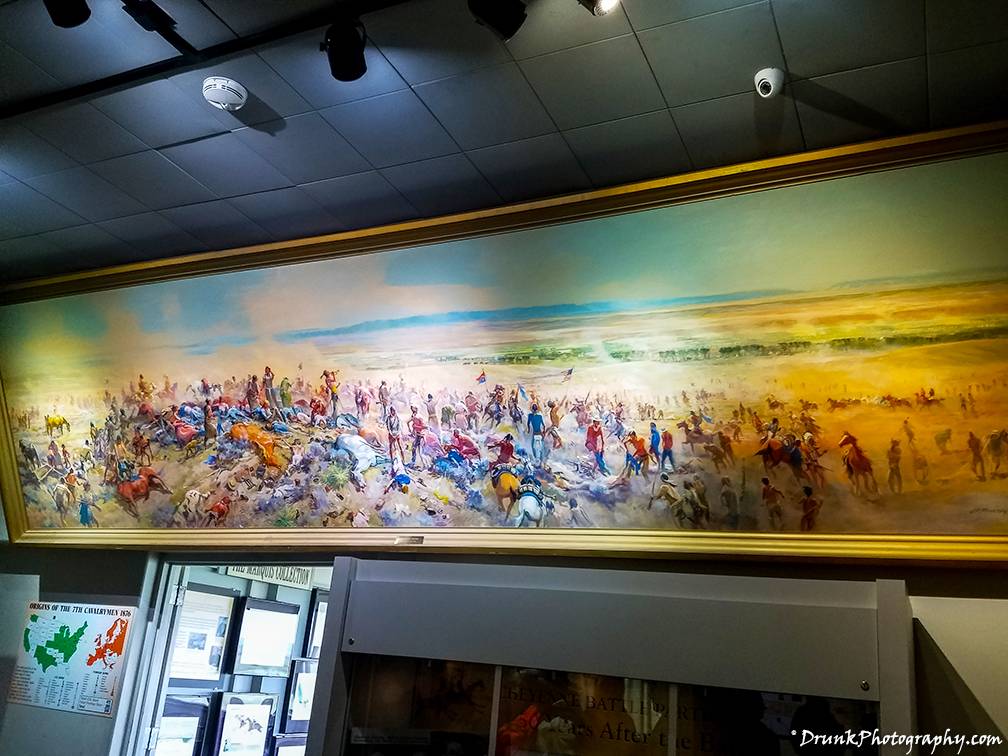
No one outside of the Native Americans knew of a possibility of gold being in South Dakota, since it was off the beaten path, and it was not part of the Oregon Trail, to the south. Gold wasn’t important to Native Americans, it was just insignificant “yellow metal”, they had no idea of its importance to the White Settlers. If not for French traders letting Native Americans know that these settlers were crazy over gold, they’d likely had been completely caught off guard by the US, and probably would have suffered worse losses. Lakota knew that if true, based on what they learned about White settlers’ crave for gold, that there would be hell coming their way, and a war for the Black Hills would be imminent. The US Government correctly speculated that there was gold in the Black Hills, this land the Lakota praised so highly and hung onto so tightly. US sent its most flamboyant Indian Killer to scout the Black Hills, the highly sensationalized Lieutenant Colonel George Armstrong Custer. He took some miners and trackers/scouts, did find the gold, however; that was a highly dangerous mission, and per the treaty of 1868, a COMPLETELY ILLEGAL MOVE by the US Government. No one is supposed to go into the Black Hills, especially not White people, so this was a covert mission. How Custer made it through the Black Hills, undetected, was a miracle in itself, via a path afterward called “Thief’s Road“, due to him stealing the Black Hills, as the Natives frame it. What was odd was that Custer never ran into real conflict while in the Black Hills searching for the gold. Custer sent word back to Fort Laramie (100 miles away), via his top US hunter/tracker/scout American, Charlie Reynolds, who went ALONE to pass the word back. Reynolds exposed the finding of gold and now the heat was officially on the Lakota, as the banned, White Settlers now knew about the gold in the Black Hills and how porous the Black Hills were. Before this point, the Lakota hadn’t actually been killing the illegal Settlers who moved on their land there. They were waiting for the US to remove the illegal Settlers and migrant workers, per the agreement of the Treaty of 1868. They were just trying to adhere to the agreement and let the US do its job. The news of gold in the Black Hills opened up a can of worms though, which led to ILLEGAL settlement towns popping up, filled with illegal White Settlers, on Native American Reservations agreed to by the treaties. This is the part that set everything aflame. Natives are told to stay on the reservations and don’t leave, but now you had illegal Settlers taking over that land Natives were to be trapped in. That wasn’t right. The discovery of gold brought all sorts of sordid affairs, and just like the Lakota didn’t care about border rules of the 1851 treaty with regards to respecting Crow land, the “tribes” of seedy White Settlers didn’t care about the 1868 treaty with regards to Lakota land in the Black Hills! Now the illegals and government weren’t honoring the treaty, in unison and certainly weren’t going to use the US Military to stop any more White Settlers, illegal or not, from taking Lakota land. The Lakota knew they were in for an all-out war. The Government offered a chance to sell the black hills, but great Lakota Chief, SITTING BULL, sent 300 warriors to lay waste to any Lakota agreeing to the sale of the Black Hills. Crazy Horse was also at this meeting and was in alignment with the decision. Sitting Bull’s word was official, no sale would happen. If the US wanted the land, they’d need to come to take it, and any time he saw non-Native or anyone helping them, they were DEAD! This declaration led to the war for the Black Hills, from 1876 to 1877, to preserve Native life and territory, a battle they knew they’d not win. So, Native Americans started killing white invaders officially at that point. That now had to be answered with force, by the US Army, and so began the start of the end.
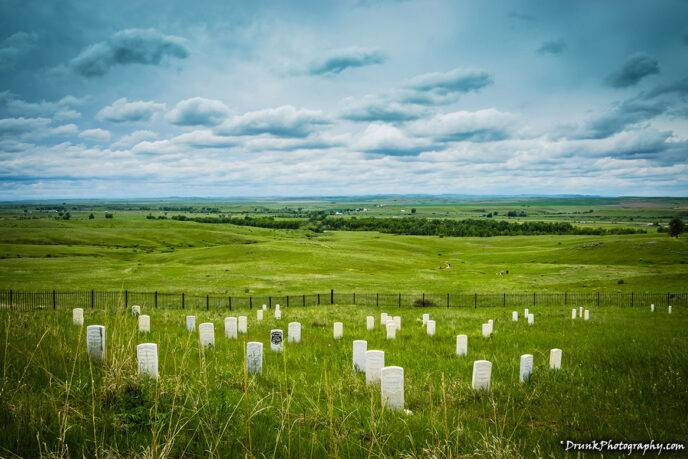
Now the US Government would send military like Custer after the Lakota, Cheyenne, and Arapahoe, while pretending like they were trying to enforce the treaty reservation boundaries, when it was for all smoke-screen for stealing the land and the GOLD from the Natives Why else would the US commission Custer to go with miners and surveyors to discover the gold and report back? The reports of killing of whites, the illegal whites already in the reservation area, and the brewing racial hatred helped build the politics needed, to sway anyone to the side of removing the Natives even from their lands! Ultimately all politicians and settlers were aligned, and negative rhetoric campaigns were released to spread racism and bigotry towards the Native Americans, in preparation to steal the Black Hills from the Native Americans and break the treaty agreement. This is where a LOT of the negative stereotypes of Native Americans became HUGE, the propaganda campaigns, where they were painted as lazy and won’t mine the gold, won’t kill all the animals on the land like they should, that they impeded the progress of the US and business creation. The Settlers were racially energized by the politicians’ words (sound familiar), and fully ready to support breaking the treaty, destroying the Native. Western Settlers whom didn’t even support Slavery, and thought breaking the treaty was morally wrong, were originally opposed to the movement against the Natives, but after the seeds of hate were already planted, everyone was on the same page about ridding the lands of Natives, in the way of Settler progress. Remember, these are the same people who just tried to rid each other of the other, often family against family, based on the feeling that the opposition was impeding the progress of Settlers, in the Civil War. You think most people thought twice about eradicating the lands of Natives? The popular thought was all of the lands is for the white people now. You can bet racial overtones were there, but the US Government, itself, had another hidden reason with that expedition into the Black Hills, it was financially in trouble.
Countdown to Bighorn
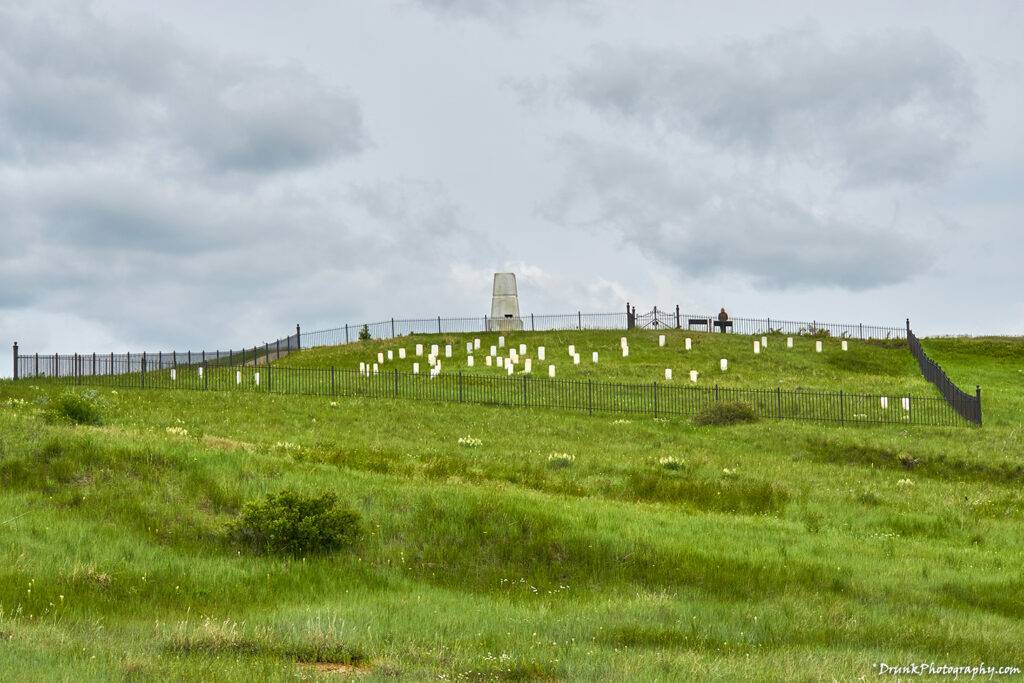
One could see why Custer had a huge bullseye on his back, for the involvement in hunting and raping of Native Americans, which he loved to do for the sport. The US didn’t just come to keep Natives on reservations, they were ready to get rid of them entirely, to make way for the people they owed their political careers to, the White Settlers. If the US owned all of the lands, it had to be because that land was taken away from Native Americans, right? If the population of White Settlers is growing, and the US would give them land for free if they homestead, or to companies who would attempt to finance those railroad systems, that meant that the US Government needed those resources from the Native Americans. That’s how imperialism works. When US Government reconstructed the reservations, they could reclaim more and more land for Settlers’ use. The US would now use Custer and cavalries like his, to specifically target Native American violators of the reservation lines of the treaty, and were NOT used to kick out White Settlers who violated the treaty now. And so began the sweep west, looking for Natives to round up and force back in reservations, the land jails, starting the Great Sioux War of 1876 (aka Black Hills war), and contained its most historically significant battle, The Battle of Little Bighorn (per US Military), aka Custer’s Last Stand aka the Battle of Greasy Grass (per Native Americans).
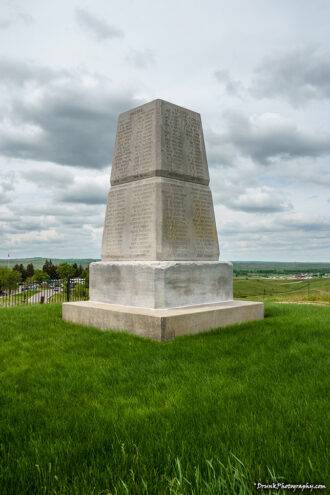
By this time, Custer was Kardashian-level Rockstar famous, and apparently that all got to his head. He had successfully infiltrated the Black Hills to find that gold, though the Native Americans were easy to work considering how easy his expedition was, and now he would return to deliver the finishing blow, to rid the Northern Plains of them. He was known as a great terminator of Natives, so all got hype when hearing his name and wanted to fight beside him. This made him a very high caliber target for the Natives. Actually, he made himself purposely a target to the enemy. Custer was very ostentatious, wore long hair and fancy but odd clothing he designed himself, ditching the classic military uniforms when he battled. He intended to stand out and call attention to himself, in battle and was completely fearless. He would be right there in front, leading the charge in EVERY battle, despite his appearance making him visibly the easiest target to identify and hit, but he wanted enemies and allies alike to know he was there to fight. He was an egotistical fool who would underestimate the Native Americans in the way they lived life and the way they battled. Being ignorant of both meant he really didn’t have a clue on how to engage them militarily. Natives in the Plains would scatter when confronted, and then regroup, often, if you chased them, you were chasing them into a setup ambush. If you came to round up a village, they would desert it or the area at a rapid pace, and you’d find nothing most times. They were too elusive, and there were no White settlements in these areas he would chase the Natives into, there were no forts, NOTHING. So that was very foolish to play into their hands and chase them deeper into Native American home court advantage, yet the persisted. He used rival Native American tribes like Crow and Arikara to locate and spy for him, that’s the only way he caught up with the Natives. These scouts came upon the Lakota camps near the battlefield and told Custer that there were too many Lakota, Cheyenne and Arapahoe tribes present, thousand +, and Custer should not pursue the fight. Custer told them to shut up. Custer thought Natives were wimps if you sneaked up on them closely, and they’d only run away. Custer was too arrogant to heed the warning.

He was so full of himself that he set out for battle but decided that he would split his company up (originally 700 strong) in to 3 different attack groups (and subs from that 3 as well for a total of 12 companies) from 3 different sides, deep in Native American land, no sat-phone, no cell phone, no way to communicate with the other parties Custer would make branch off, although he was already told, he was already outnumbered completely. 7 of the 12 companies were slaughter pretty easily. Custer made his group kill all of their horses (DUMB) and mounted them up, on top of the hill, like a barricade. He and his brother died there, on Last Stand Hill. This decision made it so that the absolutely couldn’t escape on a horse! 1 company was caught and slaughtered so badly, most while trying to flee Crazy Horse by riding into the middle of the Little Bighorn river, like morons. That river turned completely red as it was filled with the soldiers’ blood like they were literally sitting ducks to the Natives. 1 of those companies got lucky though, they happened to escape to a vantage point but were still surrounded by the Natives, who wouldn’t fully pursue fear of loss of people. This group stayed alive because it was led by Fred Benteen and Marcus Reno, who didn’t really like Custer anyway, so he didn’t even want to immediately join Custer’s group when they started the battle, and that delay saved them. The soldiers would come out in little waves, in desperation, ready to fight and then get picked off by the Natives over and over. Benteen was able to get out, but that was after a long time of a waiting game, as most of the Natives had packed up and just left the remaining cavalry where they were. Natives lost between 40 to 100, not clear. 268 soldiers would be dead, 200 directly with Custer, in the end, and Benteen had confirmed the death of Custer, personally, while wiggling out of the battle himself. Benteen went on to completely trash Custer in the news, and others were busy trying to spin the story to make a better story that US History would like. The irony is all of the generals who didn’t even want to fight that hard and didn’t want to purse the Natives that hard, as opposed to Custer who was psycho, the ones who didn’t want to fight ALL LIVED.
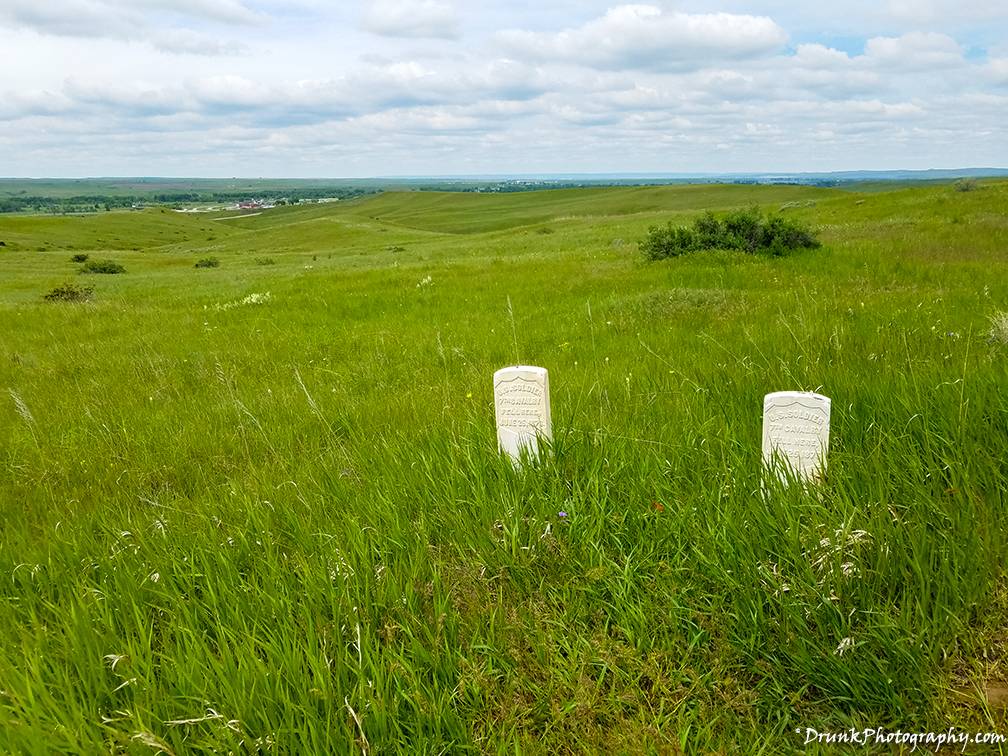
Here is how I will bring it full circle, in poetic-justice fashion. This battle was a complete slaughter at the hands of the Native Americans, it wasn’t a battle at all. It’s a highly publicized loss for the US, and a huge win for the Native Americans because of the underestimation of the Native Americans by the US forces. At the hands of the Lakota Chief Sitting Bull, war leaders Crazy Horse, White Bull, Suicide Boys and many more Lakota-Cheyenne-Arapahoe claimed the life of their greatest antagonizer and major symbol of the US’ war against the Native Americans. US’ famed warrior, George Armstrong Custer. The US population was devastated by this news. Custer was the Press’ darling, now the Press has to present his death to the public, and that infuriated the whole country. No one believed Natives could destroy the US, and now Custer was a Martyr. Now the whole country wanted the pure death of Natives. That public pressure made it to that the Government. It was a short-lived victory for the tribes, because, after that battle, the US got very serious, threw the full weight of the US military at the Native Americans, and it was WRAP for Native Americans in the Plains. Lakota was now policed, the Black Hills were now vulnerable and US did take it. Everything Natives knew would be destroyed especially because of Custer’s death at the Battle of Little Bighorn. Here is the poetic-justice part; thinking back to the Battle of Washita River, where Custer’s name got put on the map, he was successful with a strategy to kidnap women and children, then. It got him the respect of being a brutal leader in battle. But this time, at Little Bighorn, who’s terrain he certainly had not mapped out and had underestimated, fate took a turn. Custer split up his forced. The reason Custer split up his group, in the Battle of Little Bighorn, was he tried to repeat his time-tested strategy, to sneak around, grab some women and children and hold them, hostage, again! He was outnumbered at Little Bighorn, as he was at the Washita River, and figured he could repeat this trick, and his luck had finally run out, in embarrassing fashion. Custer achieved his Rockstar status start with a massacre of Native Americans, and now, he had met his brutal end, by essentially being himself, in a complete massacre by Native Americans.
Couple of points I didn’t fully know previously but filled in the gaps of knowledge with:
- Contrary to widespread belief, Native Americans were NOT all friendly to each other (in fact HATED many other tribes) and were not all 1 big happy family. Each had his own TRIBES and areas he existed in, which would often cause tension if areas were breached by outsiders. No different from any other groups around the world, even today. Tribal rewards by US, after being used to fight others, often pissed off other neighboring tribes. All were undone by this ultimately.
- The Crow was especially seen as weak by the Lakota because the Crow constantly worked with, and depended on, the protection of the US Government against other tribes. Proud Natives would not accept any help from US nor any welfare, which is another reason tribes died out. Crow let US build all of those US forts in Crow land after that 1851 treaty. The Crow was instrumental in helping the US get the Lakota, Cheyenne, and Arapahoe when the might of the US Military came for them.
- US forces constantly used/manipulated/joined forces with warring tribes to attack other tribes to clear them out, in classic divide-and-conquer strategy, to take the land. The Lakota were used against the Arikara and the US granted the Lakota the exclusive rights to the “Black Hills” initially, of what is now South Dakota in 1823, but history says there were in the areas since 1775 (just not yet so dominant in the region). The Arikara, along with Crow, would serve as the necessary scouts who exposed the Lakota, Cheyenne and Arapahoe camps for Custer’s cavalry.
- Desperate settlers flocked to California, due to the Gold Rush after 1848, proved good for the US economy. Western expansion was slow prior, but after, Settlers were flocking into the west at record-breaking speed, intruding on Native lands, which resulted in death and wars. The gold rushes that followed were highly encouraged by the US. Anything for money capitalism, no one cared about reservations boundaries of treaties. Gold rushes boost economies and was great for struggling countries after Civil Wars!
- By 1851, reservations/agencies were carved out for the tribes, as outlined in this graph after the Laramie Treaty of 1851.
- Tribes would be put in reservation areas not suitable to their lives and where conditions were uninhabitable at times. This is why they’d be “off the reservation” many times. Nobody, Native or US American honored any land carved up by the treaties, especially since nations were cast out of their birthplaces, like the Ponca. Per the treaty of 1868, they were cast out of Nebraska and told to go to Oklahoma (which didn’t suit their lifestyle), because their birthplace was in the area treaty carved up as the Great Sioux Reservation.
- Native Americans had no value placed on “yellow metal” (aka Gold) so they didn’t know why White Settlers valued it so. That would be their undoing. Had they known, this would be a completely different country, as their fates would have been much better.
- Did the Lakota actually speak English or read English? NO! So how in the world did anyone really fully understand the fine print in the Treaties? They had interpreters but was a lot lost in translation? Absolutely! Buried in the treaty were methods to “civilize” anyone in the Great Sioux Reservation. That meant schools had to now teach ENGLISH in for all youth, and Whites were permitted to live there if they were teachers, blacksmiths, Government agents, and other jobs US saw as needed jobs for establishing a civilized society. The tribes likely only heard the part about no white intruders would arrive without express permission, and that’s all the cared about.
- Those professions by White Settlers in the reservations were used heavily for scams to get money from the US Government, by US Settlers who were Government agents. A fake school would be on paper built, but not in reality, and a teacher, who needed to be paid, would be the friends or families of the agent, whom was never anywhere near this fake school and never taught, for example.
- The Black Hills are not hills, they’re mountains with trees, and they are not black either. The tree cover looked dark contrasted against the background in most lighting conditions.
- No forts were built in the Black Hills
- More gold was found in the Black Hills than any other location in the US ever; however, it didn’t have the intended goal the US wished for.
- Accepting the “welfare” from the US Government was another downfall for Natives- Ask Africans Americans how that turned out, after gaining freedom from slavery.
- Carving up Native land was also used to ensure White Settlers would be unharmed moving through the West. White Settlers traveling from Fort Laramie or Oregon Trail need to get to their gold, which was now found in Montana. Interrupt that money, you die! More land for US Government meant more lad for US Settlers.
- Soldiers were sent to kick out illegal migrant workers from the Black Hills, which often failed to work. Now the people violating the treaty’s rules were White settlers who were after that GOLD! The US let these gold crazy hunters violate the treaty, then when those people were getting killed by the tribes, the US came in pretending to protect the violators of the treaty, when really, they were after that GOLD too! This was just the excuse they needed to take it. The famous town of DEADWOOD was an ILLEGAL town, created in the Black Hills by such White Settlers violating the 1868 treaty, and no one was thrown out. You went there for prostitutes, gambling, liquor, and GOLD. That was a truly lawless wild, wild west scene with a population of over 5,000 white illegals. I went there next.
- US Government couldn’t keep up with funding the many wars against Native Americans. It was too expensive and to keep returning to the same conflicts in the same regions? Treaties were hidden methods of economic easing for the US Government, to pause having to fight wars!
- Many don’t know that The Battle of Little Bighorn was where “Custer’s Last Stand” occurred. If you ask most people, they’ll tell you that it’s related to the “The Civil War“, which it’s not.
- Little Bighorn is the Battle of Greasy Grass which also is Custer’s Last Stand, which is part of the Great Sioux War 1876. So many names to this 1 event, yet no real, significant firepower of long drawn out war occurred here. It was total slaughter of US and then done. But its significance for Lakota was HUGE, as it capped off the final run of the Lakota as a power until the full might of the US took aim at them, and they were removed with huge force.
- George Armstrong Custer was a warhawk Civil War veteran with a thirst for blood and loved hookers. He also loved to rape helpless, defenseless Native women he was ordered to clear out an area of Native camps, after the victory of the battle. This is KEY to understanding further hostilities towards Whites. He was STD LADEN (since Civil War days cheating on his wife he was reportedly dedicated intensely to), passing on STDs on to all whom he sexed or raped.
- Custer would capture Native Americans from villages he successfully raided, and then use them as human shields, in battle against Native forces. Sick in the brain for sure. Then of course, in other raids, he would rape women.
- He feared his wife (who was miles away) was going to be affected by a Cholera outbreak, so he completely deserted the military to join her, only to be tried for going AWOL and kicked out of the military for it- and there is the matter of he himself murdering any soldiers who would desert, as he had done. He was court-martialed for all of this. They let him back in the military to kill more Native Americans, of course, in Winter, when no one else would do it in those killer snowy conditions. He was that crazy.
- Custer was a WILD MAN. He was a complete renegade and while many saw him as racist, everything he ever wanted to be, the Native Americans were and had. Native Americans could have multiple wives, were fierce warriors, hunted well and roamed freely. He respected all of that and understood not sticking to reserves placed on them. His own words. To him, they were all great warriors and worthy opponents.
- US had no real intel on how to fight Native Americans in the upper Plains, prior, as they spread across the land when attacked, didn’t sit still and stay planted, awaiting slaughter. You go to burn their village, you arrive and find it’s not where you last knew it to be. They were elusive on all fronts and designed to be mobile. They’d also let you spot them in the distance, you see them scatter and you give chase, only to find yourself in the middle of a planned ambush, and then dead.
- Custer was very ostentatious, wore long hair and fancy but odd clothing he designed himself, ditching the classic uniform. He intended to stand out and call attention to himself, in battle, and was completely fearless. He would be right there in front, leading the charge in EVERY battle, despite his appearance making him visibly the easiest target to identify. He wanted enemies to know he was there, and allies loved it.
- Custer thought US military as too superior to lose to simple Native Americans, and underestimated them completely, which ultimately lead to his blunder of splitting his attacking forces into 3 parts from 3 completely different directions, and then getting SLAUGHTERED by the strategically placed Native Americans who were waiting for him at the Battle of Little Bighorn. It was a massacre and ironic end to such a famed US hero. His arrogance was his undoing.
- Custer committed political suicide, bringing the wrath of President Grant on him. He testified against Government people scamming the public and cheating reservations out of supplied it was promised. It was busting up the “Indian Ring”. Grant removed Custer from command, but didn’t matter, the PRESS lobbied for him like Rockstar and Grant had to back down!
- The next big Oglala Lakota hero would emerge, Crazy Horse, in time for the Battle of Little Bighorn of the Black Hills war, and by then he was larger than life. However, the only guy I ever learned about, previously, was Sitting Bull for this battle.
- January 1876 Native Americans had to turn themselves over to the reservations or it’s over for them. The order was purposely meant to make it impossible for them to comply. They couldn’t traverse the lands in those conditions. Also some of the reservations were extremely brutal in Winters, which is why many left the reservations for better conditions. US Government knew all of this, and also would not enforce removing Settlers from the Black Hills, hoping to build resistance and lead to conflict it needed to sweep in and take out the Lakota and the land.

